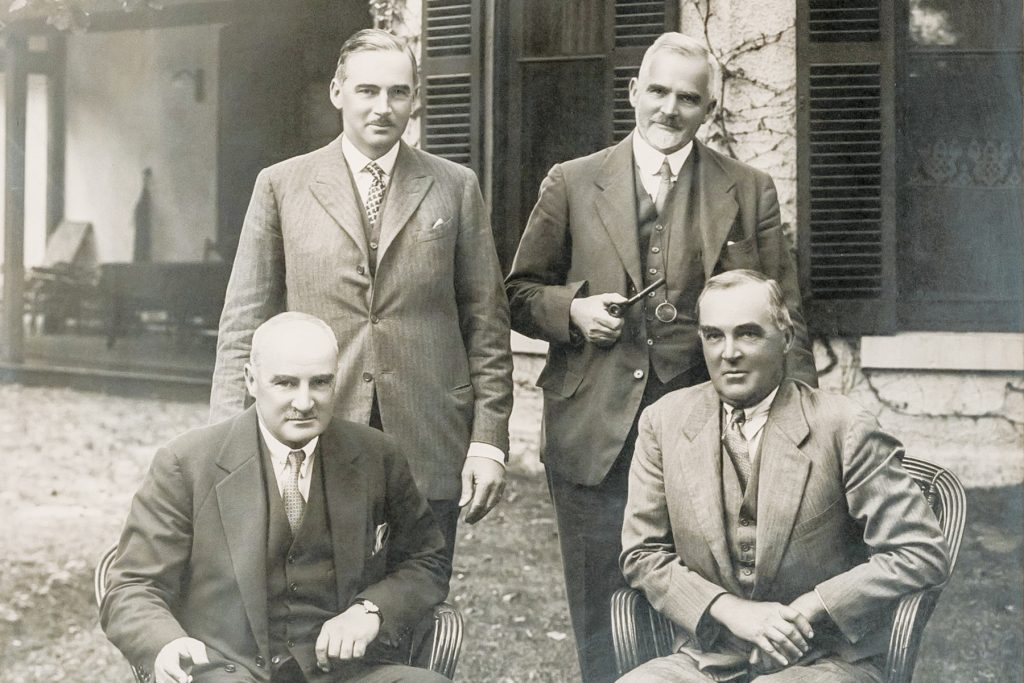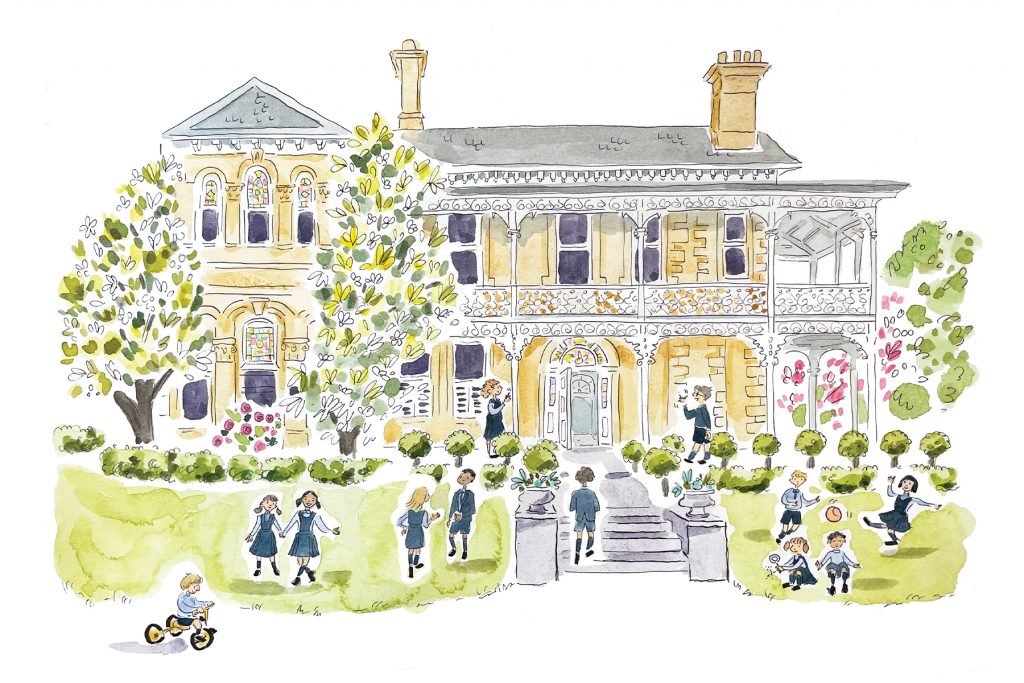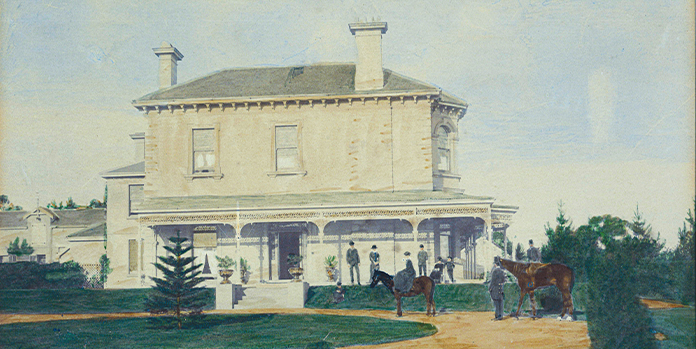This year marks the 150th anniversary of the construction of Harleston, the beautiful historic home that has served 108 years of Grimwade House students.
In archival records, the home is described as a two-storey stuccoed Italianate villa, featuring wide wrapping verandas and wonderful interior details such as its exquisite stained glass overlooking the sweeping staircase – as well as cast iron spandrels, and stencilled ceilings.
The Grimwades’ generous gift
Harleston was built in 1875 on what was then the rural countryside of Caulfield, commissioned as the family home of prominent pharmaceutical businessman Frederick Grimwade and his wife Jessie.

The house was an early residential project of architect Thomas Watts (1827–1914), who is also thought to have been responsible for Harleston’s extensive renovations in 1909. Frederick named the home after the English town of Harleston, where he was born.
Harleston was the Grimwade family home for 42 years before being gifted to Melbourne Grammar School in 1917 by Frederick’s sons; Wilfred Russell (OM 1895), Alfred Sheppard (OM 1892), Harold William (OM 1883), and Edward Norton (OM 1882), who had appreciated the need Melbourne Grammar School had for an additional junior campus.
Harleston opened the following year as the school’s second preparatory campus, serving day and boarding students.
Memories of a house and a home
From Grimwade family and business records, recollections and publications, we have a vivid idea of what life was like in the house.
Eve McGlashan, granddaughter of Edward Norton and Phelia Grimwade, described Harleston in 1898 as a warm, bustling family home where tradition and modernity blended.
She recalled sprawling gardens and lively rooms filled with love, laughter and daily rhythms – from gardening and music to shared meals with close family friend and business associate, Mr Alfred Felton.
Elizabeth Shier, the daughter of 1925–1952 Principal of Grimwade House, Harold Down, was born upstairs in Harleston and later joined classes from Year 1. She recalled life there as a blend of home and school, characterised by a large, lively household and devoted staff.
Childhood memories were shaped by the natural world – possums in the garden, fresh air on the balcony – and a regimented, communal lifestyle shared with boarders and staff. Children navigated a world of formalities, wide-open spaces and a close-knit community, making Harleston both a home and an institution filled with warmth, enjoyment, and lasting memories.
Through to 1977, Harleston continued as a home; a second home to the junior boarding students.
Jim Cousins, who boarded at Grimwade House between 1952 and 1956 (OM 1961), remembers that “The boarders were like a family. It was like having a whole lot of brothers. We regarded Grimwade [House] as our own because we were there all the time. There was a real bond.”
An enduring dedication to education
After boarding at Grimwade House closed, the campus became officially co-educational in 1979. In 1980, Harleston began a new life as the centre of Lower Primary (Prep and Grade 1).
Amongst the memories collected during the Centenary of Grimwade House in 2018, John Brookes (OM 2009) recalled; “If you say ‘Grimwade’ to me, my first thought is the Harleston house and its playground, where I spent many happy hours.
“Looking back, it was a wonderful environment in which to start school.”
As Harleston celebrates its legacy as a family home, it continues to be a place where childhood memories are made and the Grimwade brothers’ dedication to education endures.
In early October, the School will have held a commemorative event to celebrate 150 years of Harleston, with Grimwade House graduates returning to gather and reminisce on generations of Harleston memories.




